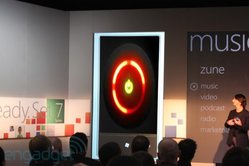So any of you guys phone aficionados? I am always looking at the new stuff that's coming out, I always like carrying something new not for flashing or anything I just love tech 
I am going to make this thread for everything that has to do will mobile technology so anyone is welcome to contribute!
Apple iPhone
As an iPhone user obviously I am waiting for OS 3.0 which should be a nice change of pace, they are adding features which should have been there since day one! So the new OS update is in beta stages and it seems like hackers are already all over it as it has been jailbroken I personally don't do it.
I personally don't do it.
Link for Jailbroken 3.0 article

(This is my home screen BTW!)
Palm Pre
So Palm has worked up their own OS and is prepping and a release along with new hardware. I can't reveal my sources yet since I am under NDA, but I got to say that the new Palm phone is sweet! it's fast for now there's some stuff that needs to be worked on. There are some nice features that I am digging on this phone the only problem I really find is that it will only go to Sprint, I am not big on Sprint specially around where I live the service is a bit overpriced and I am not willing to make that plunge. Palm has some sweet features up their sleeves though I talked to the designer last Friday and yeah these guys are excited to see their ideas come to reality

Link
So far the applications I've played with are cool and reliable, it's able to multitask without a problem! I am sure all Palm lovers will find this little toy fascinating!
I'll be back with more phones later!

I am going to make this thread for everything that has to do will mobile technology so anyone is welcome to contribute!
Apple iPhone
As an iPhone user obviously I am waiting for OS 3.0 which should be a nice change of pace, they are adding features which should have been there since day one! So the new OS update is in beta stages and it seems like hackers are already all over it as it has been jailbroken
 I personally don't do it.
I personally don't do it. Link for Jailbroken 3.0 article

(This is my home screen BTW!)
Palm Pre
So Palm has worked up their own OS and is prepping and a release along with new hardware. I can't reveal my sources yet since I am under NDA, but I got to say that the new Palm phone is sweet! it's fast for now there's some stuff that needs to be worked on. There are some nice features that I am digging on this phone the only problem I really find is that it will only go to Sprint, I am not big on Sprint specially around where I live the service is a bit overpriced and I am not willing to make that plunge. Palm has some sweet features up their sleeves though I talked to the designer last Friday and yeah these guys are excited to see their ideas come to reality


Link
So far the applications I've played with are cool and reliable, it's able to multitask without a problem! I am sure all Palm lovers will find this little toy fascinating!
I'll be back with more phones later!
Last edited:










